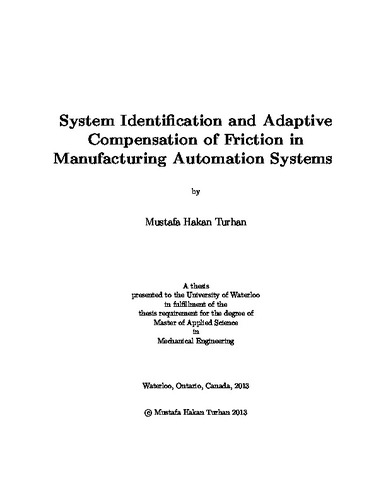| dc.description.abstract | Industrial demands for more efficient machine tool systems have been significantly increased. In order to obtain high performance machine tool systems, researchers are focused on enhancing functioning of various components of machine tool systems. Feed drives are important component of the most of machine tool systems such as computer numerical control (CNC) machines for achieving desirable performance. An essential research stream of current interest aiming enhancement of feed drive performance is construction of control methods that help to decrease tool positioning errors in the system. An effective approach for mitigation or reduction of positioning errors is modeling, identifying, and compensating friction in appropriate manner. In addition, accurate modeling of feed drive systems is essential in elimination of these positioning errors. In this thesis, the precision control of feed drives is studied using several different control methods. Firstly, the feed drive type that has common use in machine tools is chosen to be main focus for this research, namely ball screw drive. Different dynamic models of ball screw drive are shown in detail. In addition, some of the nonlinearities that affect ball screw dynamics such as friction affects are discussed. Friction modeling needs to be performed realistically and accurately in order to design an effective compensator to cancel friction effects. In general, the friction models are divided into two categories; classic (static) and dynamic friction models. In this thesis, we present details of these models and derive linear parametrization of the key ones. Based on the derived linear parametric models, we design a least-squares on-line friction estimator and adaptive friction compensation scheme. The performance of these designs are verified via simulation and real-time experimental tests. Noting that the parameters of the base rigid body model, i.e., inertia and viscosity constants, need to be known precisely for effective high precision control tasks, including the aforementioned adaptive schemes. The second part of the thesis focuses on off-line identification of these key base model parameters. In this part, we present a real-life case study on identification of plant and built-in controller parameters and a simulator design based on this identification for a grinding CNC machine used in a gear manufacturing company. | en |

